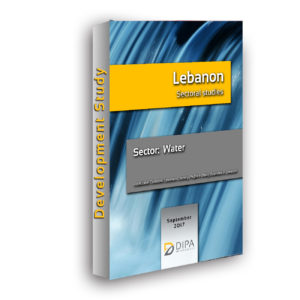 Lebanon is one of the smallest countries in the region, but strategically located on the Eastern Mediterranean, it is an important commercial hub for the Middle East. A heterogeneous country, highly divided along both religious and confessional lines, Lebanon has a relatively young population. The Lebanese system of government reflects a combination of the prime ministerial and presidential systems. A lengthy power vacuum was recently filled with the appointment of Michel Aoun as President and Saad Hariri as Prime Minister.
Lebanon is one of the smallest countries in the region, but strategically located on the Eastern Mediterranean, it is an important commercial hub for the Middle East. A heterogeneous country, highly divided along both religious and confessional lines, Lebanon has a relatively young population. The Lebanese system of government reflects a combination of the prime ministerial and presidential systems. A lengthy power vacuum was recently filled with the appointment of Michel Aoun as President and Saad Hariri as Prime Minister.
The business environment in Lebanon is relatively restrictive, with the World Bank ranking it 126 out of the 189 countries surveyed in its Doing Business 2017. In terms of Global Competitiveness, the World Economic Forum ranks Lebanon as the 101st most competitive nation in the world (out of 138 economies).
In spite of Lebanon having the highest amount of rainfall per capita in the Middle East, the country suffers from acute water shortages during the dry summer months. This is due to a failing and politicized infrastructure network that provides very low water storage capacity, the difficulty of capturing the water close to the sea, a lack of proper regulation, and an exceptionally high level of leakage. There is a gap in water management policy and the country has an urgent need for infrastructure investments and institutional reforms. This study is a part of the Development Study and analyses the water sector.
1. Country Profile
1.1 History of Lebanon
1.1.1 Early History
1.1.2 The Civil War
1.1.3 Recent Developments
1.1.4 Relationships with neighbouring states
1.2 Geography
1.2.1 Area and Boundaries
1.2.2 Topography
1.2.3 Land Use and Water Resources
1.2.4 Environmental Concerns
1.3 People and Society
1.3.1 Population and National Identity
1.3.2 Demographics
1.3.3 Societal Characteristics
1.4 Government
1.4.1 Framework of Government
1.4.2 Executive Branch
1.4.3 Legislative Branch
1.4.4 Judicial Branch
1.4.5 Political Parties and Leaders
1.5 Main Infrastructure
1.5.1 Transportation
1.5.2 Tele Communications
1.5.3 Energy
1.6 Key Industries and National Resources
2. Water
2.1 Water Resources
2.2 International Water Issues
2.3 Water Use
2.4 Agriculture and irrigation
2.5 Policies and water management
2.6 Competitive landscape
2.7 Challenges and opportunities
3. Doing Business
3.1 Starting a Business
3.2 Dealing with Construction Permits
3.3 Getting Electricity
3.4 Registering Property
3.5 Getting Credit
3.6 Protecting Minority Investors
3.7 Paying Taxes
3.8 Trading across Borders
3.9 Enforcing Contracts
3.10 Resolving Insolvency
3.11 Measuring competitiveness by the World Economic Forum
3.12 Corruption Index
3.13 Public – Private Partnerships
